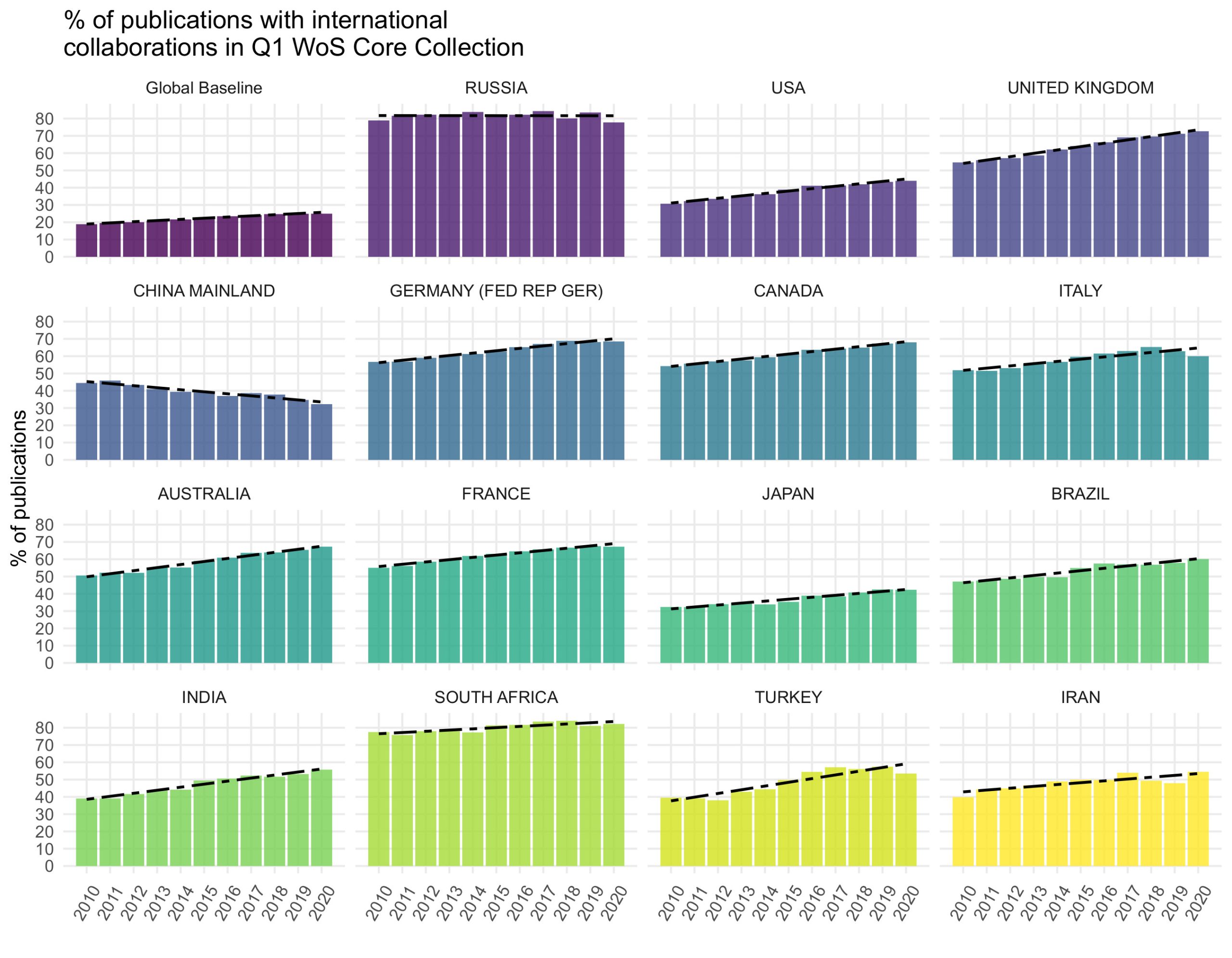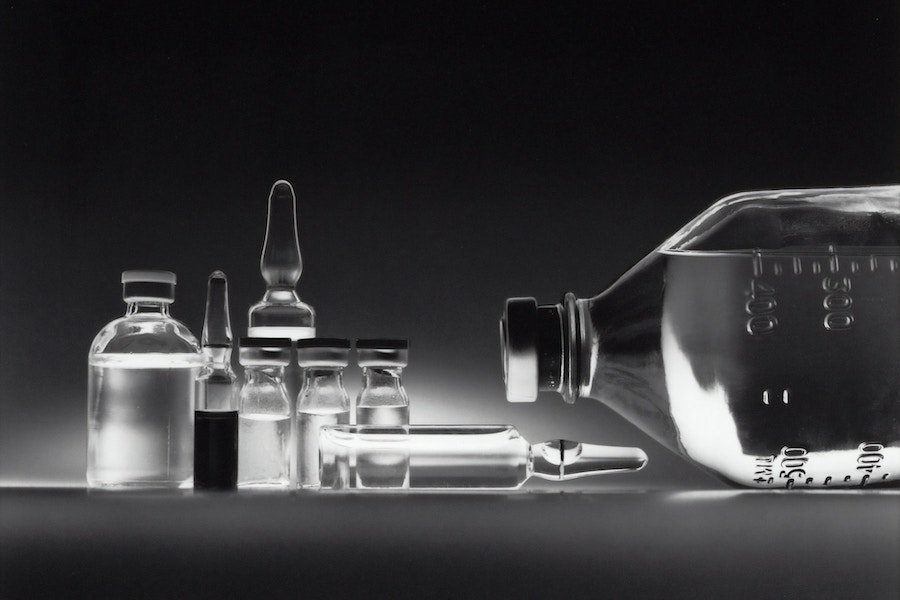Russian medical sciences’ shift in focus toward collaboration with new partners will likely mean a change in quality.
Ekaterina Dyachenko, Yuri Agafonov, and Katerina Guba
Photo: The role of international collaboration as a driver of top-level Russian medical publications is difficult to overstate. Photo by National Cancer Institute on Unsplash
In order to understand the consequences of the Russian military operation in Ukraine for Russian science, we must evaluate the achievements made by Russian science leading up to the early 2020s.
Is Russian science well enough established to overcome the negative effects of the large-scale emigration of scientists and their severing of ties with Russian institutions? The answer will vary across different fields. It is only logical to expect significant difficulties for sciences in which scientific growth is closely linked to international collaboration.
We used scientometric tools to assess the contributions that Russian medical research has made to global science, observing that the significant increase in publications in recent years has largely been due to international collaboration.
You can read more about our research in the report “The Internationalization of Russian Medical Science (2010–2020).”
Achievements in Medical Sciences before 2020
Starting in the 2010s, Russian science’s push for internationalization was declared on the state level and was supported by a number of measures that were put into practice.
For Russian scientists, the opportunities for international academic mobility, communication with foreign colleagues, and access to foreign scientific literature radically expanded during this period. In science management, scientometric indicators calculated using international scientific databases became popular. This created additional incentives for Russian scientists to publish their findings in foreign journals.
These efforts yielded results. Our analysis shows that the proportion of all Russian papers published in international journals rose from 6% in 2011 to 20% in 2020. However, since the majority of countries were trying to increase their publication numbers during this time, Russia did not gain a more prominent place on the global map of medical science.
Let’s compare Russia’s contribution to that of some other countries in the global medical publication pool.
We intentionally chose countries whose scientists face linguistic, cultural or financial barriers to publishing in authoritative medical journals, just as Russian scientists do. Compared to the BRICS countries, Turkey, and Iran, Russia’s contribution is relatively small in absolute terms, comparable to South Africa.

Number of Russian medical publications compared to other countries (according to data from Web of Science), 2010-2020

Distribution of Russian medical publications compared to other countries (according to data from Web of Science), 2010-2020
However, the increase in the number of publications by Russian scientists in foreign journals has not led to a significant increase in quality. Publications in high-quality (first-quartile) journals in 2010–2020 accounted for approximately 30% of the total, and this number fluctuated very little throughout this period.
Moreover, compared to other countries, papers by Russian authors are much more likely to be found in the 4th quartile (almost 50%).
International Collaboration as a Driver of Growth
How were Russian medical researchers able to increase their number of publications, including in international journals?
In many ways, this growth can be attributed to international collaboration. Whereas in 2010 nearly a third of publications by Russian authors in international journals were written in collaboration with foreign scientists, by 2020 this share had increased to 50%.
In first-quartile journals, 70% of publications by Russian authors in 2020 included foreign co-authors.
In addition, Russian authors only take the lead role of main/corresponding author 25% of the time. In other words, for the vast majority of articles written by international teams, the main authors are scientists from other countries.
We see the same pattern when analyzing articles published in the most prestigious journals. For example, during this period, The Lancet published only one “purely Russian” article. It is a widely known study by scientists from the N. F. Gamaleya National Research Center for Epidemiology and Microbiology on the safety and immunogenicity of the Sputnik V vaccine.
Foreign collaborations were most often with scientists from the US, the UK, Germany, France, and Italy—all leaders in medical research. Prior to 2020, the number of joint publications with scientists from each of these countries grew steadily. By the end of the period, the international relations between these countries were embodied in hundreds of scientific articles published annually.
To what degree is this state of affairs specific to the Russian sciences?
Comparing data across multiple countries helps answer this question. We included the following countries in the analysis: the US, the UK, China, Germany, France, Italy, Canada, Japan, Australia, Brazil, India, South Africa, Turkey, and Iran.
The only country with a comparably high proportion of international collaborations in Q1 publications is South Africa. China is the outlier in this general trend, with a low and falling share of articles produced by international collaboration.
Thus, we can say that although Russia is not unique in this sense, Russian authors’ share of international collaborations in high-quality publications is among the highest.
The role of international collaboration as a driver of top-level Russian medical publications is difficult to understate.

Share of the country’s publications in first-quartile journals with international co-authorship, according to Web of Science.
What’s Next?
In light of the large role played by international collaborations, it should be expected that in the coming years, we may see a drop in the number of Russian publications in reputable medical journals.
It is important to emphasize that in those countries that are the main partners of Russian scientists, the share of articles written through international collaboration is extremely low. This represents an asymmetry in collaboration patterns. Many of the leaders in the production of medical knowledge (the US, the UK, Germany, and France) are major partners for Russian authors. However, for authors in these countries, the share of collaborations with Russia is insignificant.
For example, collaborations with the United States represented 36% of Russian publications in 2020, while in the same year collaborations with Russia represented only 1.4% of U.S. articles (the share is calculated from all co-authored articles in medical sciences).
We are not the main partner of these countries.
Perhaps we should expect that the share of articles co-authored with countries that Russia considers “friendly” will increase. Our research showed that in these countries, articles by Russian scientists were most often published either in little-known publications or even in “predatory” journals.
In other words, Russian medical sciences’ shift in focus toward collaboration with new partners will likely mean a change in quality.
* * *
A snapshot of the publication activity of Russian researchers at the end of 2022 already shows that Russian authors are reorienting themselves toward publishing houses with a controversial reputation (Frontiers and MDPI). Although their journals have high metrics, many foreign researchers urge others to avoid publishing with them. Over the past year, these are precisely the types of journals that have seen an increase in papers written by Russian authors. Moreover, these have been the journals in which Russian authors have been able to publish independently, without the participation of foreign researchers.
Russian authors face great challenges both in terms of developing international scientific cooperation and in terms of conducting high-level research on their own.





0 Comments